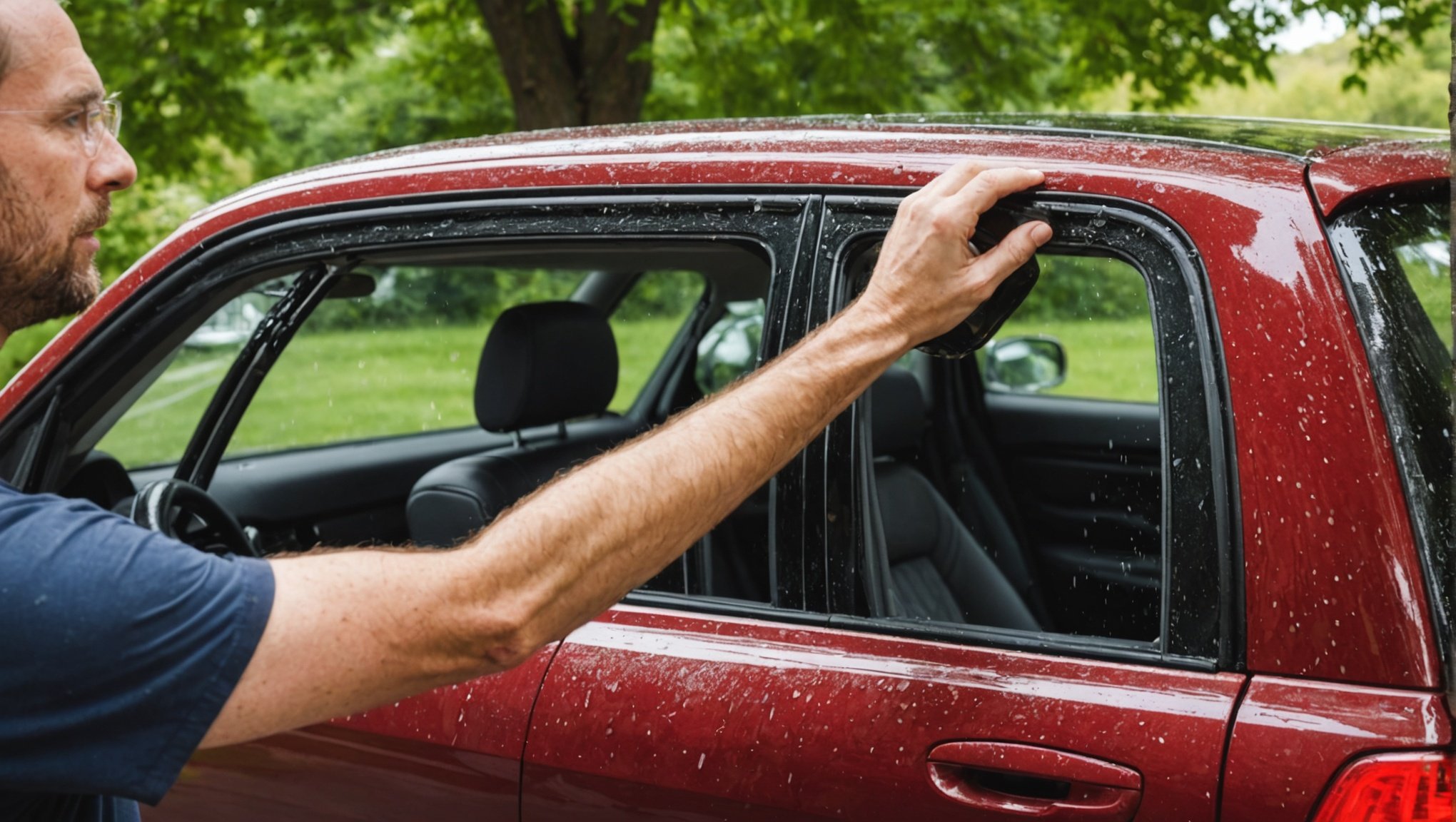Tree sap can be a vexing issue for car owners, leaving frustrating stains and potential damage to your vehicle's paintwork. Knowing how to tackle this sticky problem effectively and safely is essential. This guide sheds light on proven methods and tips specifically for UK conditions. Discover practical solutions that not only preserve your car’s exterior but also ensure a thorough removal of sap, protecting your investment. Say goodbye to those pesky drops clinging to your car!
Understanding Tree Sap and Its Effects on Car Exteriors
Tree sap is a sticky, organic substance produced by various trees, including maple, pine, and birch. It comprises sugars, water, and minerals, which can create a resilient bond when it lands on car surfaces. The effects of tree sap on car exteriors can be surprisingly damaging. Once the sap hardens, it becomes difficult to remove and can lead to car exterior damage by etching into the paint and finishes.
In parallel : Mastering Advanced Driving Techniques: Essential Tips to Prevent Accidents in Busy UK Traffic
The impact of tree sap on car paint is significant. The acidic nature of some sap types can corrode the clear coat, leaving dull spots and potentially exposing the underlying paint. This exposure can lead to further deterioration and even rust if not addressed promptly. Therefore, tree sap removal is crucial to maintain the vehicle's appearance and protect its value.
Timely removal of tree sap is essential to prevent long-term damage. Using appropriate cleaning agents and methods can effectively dissolve the sap without harming the car's finish. Regularly checking for sap deposits and acting quickly can save car owners from costly repairs and ensure their vehicle remains in pristine condition.
Also read : Mastering Ceramic Coating: A Step-by-Step DIY Guide for Your Car in the UK”s Unique Weather Conditions
Safe Products and Techniques for Removal
When it comes to safe tree sap removal, choosing the right cleaning products is crucial. Commercial products like Goo Gone and Turtle Wax Bug & Tar Remover are specifically formulated to dissolve sap without harming your car's paint. These products are effective because they contain solvents that break down the sticky substances, making them easier to wipe away.
For those preferring home remedies, rubbing alcohol and hand sanitiser can be surprisingly effective. They work by breaking down the sap's bond with the car surface. However, caution is advised to avoid potential damage to the paint. It's always best to test these on a small, inconspicuous area first.
Removal techniques also play a pivotal role. Start by softening the sap with warm water and a microfiber cloth. Gently apply the chosen product, allowing it to penetrate the sap. Use a circular motion to lift the residue, ensuring minimal pressure to avoid scratches.
Comparing home remedies to commercial products, the latter often provide quicker, more reliable results. However, for those on a budget, home remedies can be effective with careful application. Prioritising safe methods ensures your car's paint remains intact while achieving a clean, sap-free surface.
Step-by-Step Guide to Removing Tree Sap
Removing tree sap from your car can be straightforward with the right approach. Follow this step-by-step tree sap removal guide to ensure effective results without damaging your vehicle's finish.
Preparation Before Removal
Before beginning the removal process, gather essential tools and materials. You'll need a microfiber cloth, a bucket of warm water, and your chosen cleaning solution, such as a commercial sap remover or a home remedy like rubbing alcohol. Ensure your car is parked in a shaded area to prevent the cleaning solution from drying too quickly.
Applying the Cleaning Solution
Start by soaking the microfiber cloth in warm water and gently wiping the affected area to soften the sap. Apply the cleaning solution directly onto the sap, allowing it to sit for a few minutes. This step is crucial as it helps break down the sap's bond with the car surface. Use a circular motion to lift the sap, applying minimal pressure to avoid scratches.
Final Touches and Care
After removing the sap, rinse the area with clean water and dry it with a fresh microfiber cloth. To maintain your car's exterior, consider applying a coat of wax. This protective layer helps prevent future sap adhesion and keeps your vehicle looking pristine. Regular checks and care will ensure your car remains in top condition.
Preventing Tree Sap Damage
Preventing tree sap from damaging your car involves strategic choices and regular maintenance. Parking wisely is a crucial first step. Opt for locations away from trees known for sap production, such as maple and pine. If unavoidable, use a car cover to shield your vehicle.
Regular maintenance is essential to protect your car paint. Wash your car frequently, especially during seasons when sap production is high. This practice not only removes sap but also prevents other contaminants from settling. Pay special attention to the hood and roof, as these areas are most exposed.
Applying protective coatings and wax significantly enhances car protection. A high-quality wax creates a barrier, making it harder for sap to adhere to the surface. Regular waxing not only prevents sap damage but also preserves the car's shine. Consider ceramic coatings for long-lasting protection; these provide a durable layer that resists sap and other environmental hazards.
Incorporating these maintenance tips into your routine ensures your vehicle remains in optimal condition, reducing the risk of sap-related damage. Regular checks and proactive measures are key to maintaining your car's exterior and value.
UK-Specific Considerations for Tree Sap Removal
In the UK, tree species such as oak, sycamore, and horse chestnut are prevalent and known for their sap production. Each of these trees has unique characteristics influencing how and when sap is released. For instance, sycamores produce a sticky sap that can be particularly challenging to remove from car exteriors.
Seasonal Factors
Weather conditions in the UK play a significant role in sap production. The warmer months of spring and summer typically see increased sap flow as trees actively grow. During these seasons, it's crucial to be vigilant about checking your vehicle for sap deposits, as the combination of heat and sap can exacerbate damage to car paint.
Local Recommendations
When it comes to removing tree sap, UK residents have access to both local and international products. Some UK-specific products are designed to handle the unique local environment and sap types. Additionally, seeking services from local car detailers familiar with UK tree species can ensure effective and safe sap removal. These professionals can provide tailored advice and treatments, protecting your vehicle from the specific challenges posed by the UK environment.
















